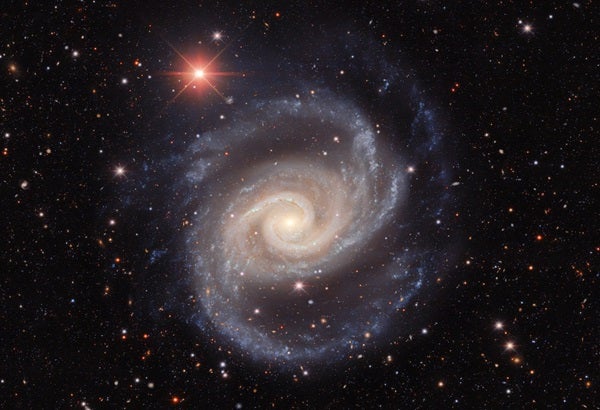Gyrating 70 million light-years from Earth, the glowing blue arms and shiny center of NGC 1566, also called the Spanish Dancer Galaxy, offers researchers insight into the evolution of stars, black holes, and more. It even hosted a recent supernova in 2010.
This stunning photo was taken at the Cerro Tololo Inter-American Observatory in Chile with the Dark Energy Camera (DECam). The powerful instrument captured the galaxy’s winding arms of gas intermingled with streaks of dust, which is a perfect match for creating new stars. And indeed, the cooler shade of the far-flung regions indicates the light of bright, hot young stars. Moving toward the center of this galactic dancer, the colors become warmer as the stars increase in age. At the center is the galaxy’s active nucleus, containing a giant black hole whose light changes every 100 days, leaving astronomers guessing as to its exact nature and activities.
Although this galaxy’s brilliance gives it the appearance of a soloist, it is part of a larger galaxy family called the Dorado Group. This cluster is made up of 46 galaxies, tied together by their gravitational pull. NGC 1566 is the most notable member of the group and has a smaller family of other galaxies over which it reigns. Overall, the role this galaxy and others play in the Dorado Group is helping researchers learn more about how galaxies interact on the biggest scales.
The use of the DECam was part of the larger Dark Energy Survey used to map thousands of galaxies from 2013 to 2019. This Spanish Dancer has been such a big hit that the James Webb Space Telescope is expected observe it, along with 18 other nearby galaxies, in the near future.










